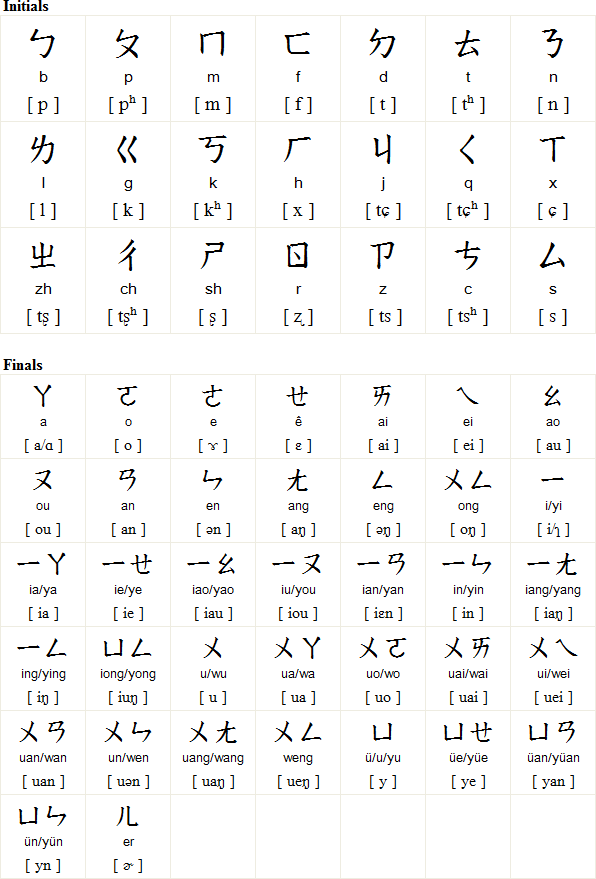Zhuyin fuhao is a phonetic script used in dictionaries, children's books, text books for people learning Chinese and in some newspapers and magazines to show the pronunciation of the characters. It is also used to show the Taiwanese pronunciation of characters and to write Taiwanese words for which no characters exist.
It was created in China between 1912 and 1913 by the Commission on the Unification of Pronunciation (讀音統一會), but was abandoned in favour of Hanyu Pinyin after 1949, and has been used in Taiwan since then.
Initially is was called 注音字母 (zhùyīn zìmŭ - "sound anotating letters") or 國音字母 (gúoyīn zìmŭ - "national phonetic letters") and it was first proposed as the national standard for transcribing Mandarin Chinese at a government-sponsored conference in 1913 and officially adopted as such in 1928. It was renamed 注音符號 (zhùyīn fúhào - "phonetic symbols") in 1930, and is popularly known as ㄅㄆㄇㄈ (bopomofo) after the names of the first 4 symbols.
The Zhuyin symbols were developed from Chinese characters and use parts of characters that have the relevant pronunciation in Mandarin. For example, ㄅ(b) comes from 勹, part of 包 (bāo). Many of the Zhuyin symbols are modelled on obsolete or cursive characters.

This order of the symbols is used in dictionaries and indices.
Download this chart in Word or PDF format
Vertical

Horizontal

Rénrén shēng ér zìyóu, zài zūnyán hé quánlì shàng yīlù píngděng. Tāmen fùyǒu lǐxìng hé liángxīn, bìng yīng yǐ xiōngdì guānxì de jīngshén hùxiāng duìdài.
Listen to a recording of this text
All human beings are born free and equal in dignity and rights. They are endowed with
reason and conscience and should act towards one another in a spirit of brotherhood.
(Article 1 of the Universal Declaration of Human Rights)
Books about Chinese characters and calligraphy
Mandarin, Shanghainese, Hokkien, Taiwanese and
Cantonese
language learning materials

Omniglot Chinese
learn to read, write and pronounce Chinese characters
Information about Zhuyin fuhao / Bopomofo
http://en.wikipedia.org/wiki/Bopomofo
http://www.pinyin.info/romanization/bopomofo/
http://www.mandarinbook.net/bopomofo/
Bopomofo stroke order
http://commons.wikimedia.org/wiki/Commons:Stroke_Order_Project/Bopomofo
Bopomofo ㄅㄆㄇㄈ Mnemonic Worksheets for Children
http://castleofcostamesa.com/bopomofo-ㄅㄆㄇㄈ/bㄅ-bopomofo-mnemonic-activity-page
Chinese Text Annotation - adds inline Pinyin or Zhuyin annotations above words,
or adds pop-up annotations with English definition of the word to Chinese texts
http://mandarinspot.com/annotate
Chinese Romanization Converter - converts between pinyin, zhuyin and others transcriptions systems
http://humanum.arts.cuhk.edu.hk/Lexis/Lindict/
Pinyin-Zhuyin converter
http://www.inxsoft.net/mandarin-resource/converter.php
Chinese-English dictionary with pinyin and zhuyin
http://humanum.arts.cuhk.edu.hk/Lexis/Lindict/
Information about other phonetic transcription systems for Mandarin Chinese